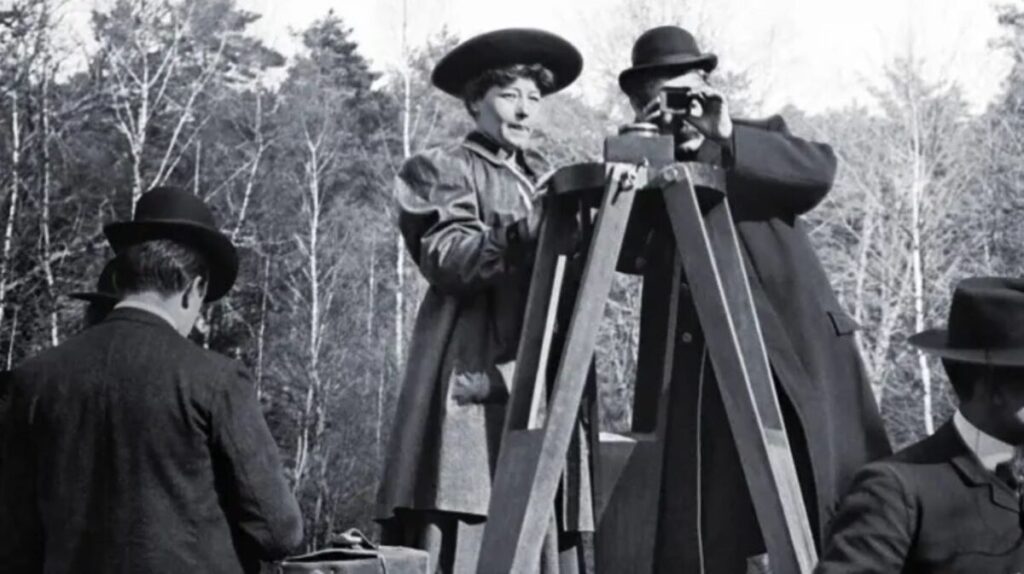In 2018, a documentary premiered at the Cannes Film Festival titled Be Natural: The Untold Story of Alice Guy-Blaché. Director Pamela B. Green told the story of a figure nearly lost to history and it shows at the start when several major figures of film history are asked if they heard of this woman. Everyone said no. It tells you immediately how little known this French woman is even though she is essential to cinema history. It is very sad, yet now Alice Guy-Blaché is having her legacy revived and being placed in the pantheon of pioneers in the film industry. But her path and the amount of work she did is one to be celebrated and recognized as being bigger than her male counterparts.
On the 1st of July 1873, Alice Ida Antoinette Guy was born in Saint-Mandé, a suburb of Paris. At the age of 18, she took up stenography and was later hired at a camera manufacturing business which would be bought by a group of men including Leon Gaumont. The company was named after him and Guy, who would be very attentive to Gaumont’s clients and marketing plans, would quickly grasp the plans of making motion pictures. The Lumiere brothers invited some notable figures, including Gaumont and Guy herself, to a showing of a film demonstration which showed the movie camera effectiveness. A forty-second film titled Workers Leaving The Lumière Factory in Lyon captured everyone’s attention to what could be filmed, and Guy soon asked Gaumont if she could make her own short film.
In 1896, Guy released the first version of a one minute movie called La Fée aux Choux, which see remade in 1900 and 1902. Impressed, Gaumont made her the company’s head of production, a position she held until 1906. This made her the first female filmmaker and probably the only one in this period alongside the more well-known Georges Melies. The first films were the smallest of stories which showed dance and travel in motion; most of these films are now lost, but they showed the public what moving pictures could do. In 1906, she made a bigger film – 33 minutes – titled La vie du Christ which tells the story of Jesus in 25 scenes and this film remains in public domain today. Different techniques were tried out including double exposure and masking, while using Gaumont’s Chronophone, a sound-on-disc machine.
A change in her career came in 1907 when Guy married Herbert Blaché, the production manager for Gaumont in the United States. Moving to New York City, Guy-Blaché continued to direct film and was the artistic director of American operations until 1910 when the couple decided to create their own production company, Solax Studios. The studio was constructed to have everything done in one building: filming, editing, set construction, costume design, and other necessary work in creating a movie. In 1912, the same year they opened their new facility in Fort Lee, New Jersey, Guy-Blaché made what is considered the first film featuring an all African-American cast, A Fool And His Money.
By the end the decade, the popularity of East Coast filmmaking declined to the less expensive and climate friendly confines of Southern California. Alice and Herbert divorced in 1922 when he fell in love with another actress and moved to Los Angeles and so ended Solax Studios. Her last movie, Tarnished Reputations, was released in 1920 and Alice, nearly bankrupt, sold off most of her film assets before returning to France. She would not make another film for the rest of her life and struggled to get any work in the rapidly changing industry. Alice wrote her memoirs but it would be published in 1976 thanks to her surviving daughter, Simone. Returning to the United States in the 1960s, Alice Guy-Blaché died on March 24, 1968, at the age of 94.
Only now more than 100 years later is Alice Guy-Blaché getting recognized more by historians and the amount of work that has been saved is getting distributed again. In 2002, a biography called Alice Guy Blaché: Lost Visionary of the Cinema was published by Alison McMahan. Guy-Blaché is credited of directing over 1,000 films, 22 of which are feature-length, but only 150 films have been preserved. Two noted directors, Alfred Hitchcock and Sergei Eisenstein, both had written liking her films such as the short comedy The Consequences of Feminism (1906) and Making An American Citizen (1912). In her autobiography, Guy-Blaché wrote about working in a fledgling industry: “I have often been asked why I chose such an unfeminine career. But I did not choose this career, my destiny was already mapped out.”
Follow me on X (Twitter): @Brian_cine (Cine-A-Man)

